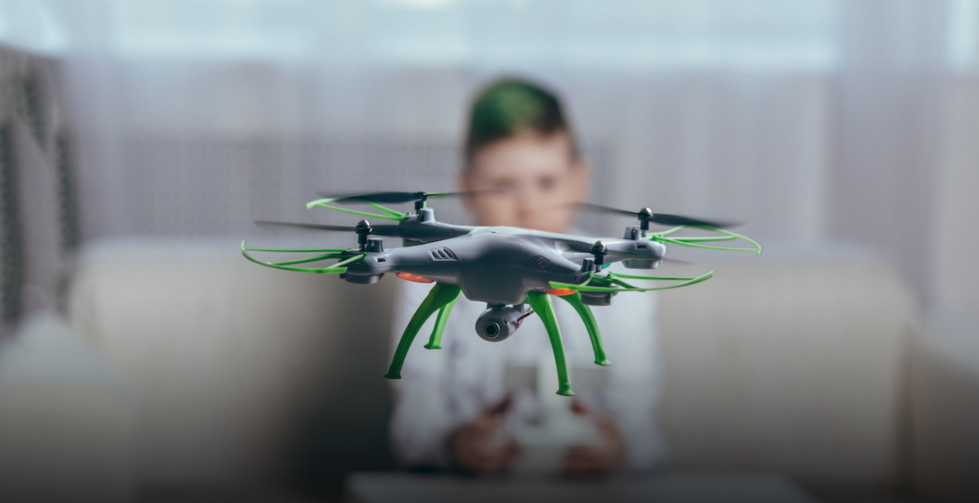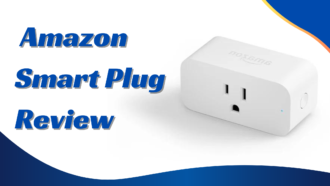Exploring Diversity Trends in Drones
In the ever-evolving landscape of uncrewed aerial vehicles (UAVs), this exploration delves into the dynamic trends shaping diversity within the drone industry. From technological advancements to expanding applications across various sectors, discover how drones are becoming more inclusive and diverse. Embark on a journey that transcends the skies, revealing the profound influence of diverse perspectives and applications in propelling the drone industry to unprecedented heights.
Diversity Trends in Drones
Join us as we navigate the exhilarating trends, reshaping possibilities and fostering a future where inclusivity thrives in drones. For a deeper understanding of cutting-edge technology and gadgets, immerse yourself in the latest Tech & Gadgets domain advancements. Stay at the forefront of innovation as we explore the ever-evolving landscape of futuristic tech, ensuring you remain well-informed and inspired by the forefront of technological progress.
Urban Planning
Drones emerge as transformative instruments in urban planning, revolutionizing conventional approaches to city development. These uncrewed aerial vehicles deliver a comprehensive bird’s-eye perspective, capturing high-resolution imagery and 3D mapping data. Urban planners harness this invaluable information to scrutinize land usage, traffic patterns, and infrastructure, fostering well-informed decision-making.
- Enhanced Data Collection: Drones streamline planning by providing efficient surveys, data collection, and real-time insights. Traditional urban planning methods often rely on ground surveys and satellite images, which can be time-consuming and less detailed. On the other hand, drones offer rapid data collection with higher precision, allowing for more thorough and accurate urban models.
- Sustainable Development: Whether evaluating potential development sites or monitoring the impact of urban projects, drones play a pivotal role in advancing sustainable, innovative city initiatives. They can monitor environmental factors such as air quality and green space distribution, ensuring that new developments align with ecological sustainability goals.
- Infrastructure Monitoring: In the continually expanding urban landscape, drones enhance precision, speed, and data-driven strategies. They can monitor existing infrastructure like bridges, roads, and buildings for maintenance needs, potentially identifying issues before they become serious problems, thereby ensuring the longevity and safety of urban structures.
Homeland Mapping
The integration of drones sparks a revolutionary shift in homeland mapping. Uncrewed aerial vehicles take centre stage in surveillance, border control, and emergency response. Outfitted with advanced cameras and sensors, drones offer real-time monitoring, empowering authorities to elevate security measures.
- Enhanced Surveillance: Whether surveilling border regions or swiftly responding to emergencies, drones in homeland mapping demonstrate unparalleled agility and efficiency. They provide continuous, real-time data critical in situations requiring immediate action, such as natural disasters or security threats.
- Border Security: Their capability to navigate remote or challenging terrains ensures thorough surveillance, bolstering national security. Drones can cover vast and rugged terrains that are otherwise hard to monitor, reducing the risk of illegal activities along borders.
- Emergency Response: In the dynamic realms of security and defence, drones emerge as indispensable assets, furnishing valuable data and insights to fortify borders and adeptly counter evolving threats. During natural disasters, drones can quickly survey affected areas, helping to coordinate relief efforts and assess damage with unprecedented speed and accuracy.
Construction
Drones redefine the construction industry, introducing efficiency and innovation into traditional processes. These uncrewed aerial vehicles have become indispensable for various construction tasks, offering aerial surveys, site inspections, and project monitoring.
- Accurate Data Collection: With high-resolution cameras and mapping capabilities, drones provide accurate topographical data, facilitating detailed site analysis. Traditional surveying methods can be labour-intensive and time-consuming, but drones streamline this process, offering quicker and more detailed site assessments.
- Project Monitoring: Construction professionals leverage this technology for surveying, mapping, and monitoring project progress, resulting in streamlined workflows and improved decision-making. Real-time data from drones helps track project milestones and identify potential delays or issues early.
- Safety and Efficiency: Drones enhance safety by reducing the need for manual inspections and optimizing resource management. By providing detailed aerial views, drones can identify safety hazards from a distance, thereby minimizing the risk to human inspectors.
- Cost Savings: In the dynamic realm of construction, drones are catalysts for increased productivity, cost savings, and enhanced overall project management. Reduced need for manual labour and the ability to quickly identify and address issues lead to significant cost reductions.
Conservation of Cultural Relics
Drones are guardians of cultural relics, capturing intricate aerial imagery for archaeological sites and historical landmarks. Their non-intrusive documentation, monitoring, and conservation capabilities play a pivotal role in safeguarding the rich tapestry of cultural heritage.
- Detailed Documentation: Drones can capture high-resolution images and videos that provide detailed records of historical sites, helping preservationists document their current state accurately. This data is invaluable for research and restoration purposes.
- Non-Intrusive Monitoring: As technology evolves, the advent of FPV (First Person View) drones further enhances these efforts. FPV drones, with their immersive and precise flying capabilities, offer a unique perspective for cultural preservationists. Navigating through intricate spaces, FPV drones contribute to the meticulous documentation and monitoring of heritage sites.
- Access to Difficult Areas: Drones can access areas that are challenging for humans to reach, such as the tops of ancient structures or deep within ruins, allowing for comprehensive surveys without the risk of damaging delicate sites.
- Public Engagement: Drones also offer new ways to engage the public with cultural heritage. By creating detailed 3D models and virtual tours, drones can help bring history to life for people who might not be able to visit these sites in person.
Agriculture
Drones are transforming agriculture, offering a new level of precision and efficiency in farming practices. This approach, known as “precision agriculture,” utilizes drones to monitor crop health, manage irrigation, and optimize fertilizers and pesticides.
- Crop Monitoring: Equipped with multispectral and thermal sensors, drones can assess crop health by detecting variations in plant vigour. This data helps farmers identify stress areas due to pests, disease, or inadequate irrigation.
- Efficient Resource Management: Drones provide detailed maps of fields, enabling farmers to implement site-specific management practices. This precision reduces waste and improves yields, contributing to more sustainable farming practices.
- Automated Tasks: Besides monitoring, drones can perform automated tasks such as spraying pesticides or distributing fertilizers, ensuring that these substances are applied evenly and only where needed.
- Disaster Management: Drones play a critical role in disaster management within agriculture. They help assess damage from events like floods or droughts quickly and accurately, thus aiding in quicker recovery and response.
Environmental Monitoring
Drones offer significant benefits for environmental monitoring, providing critical data to support conservation efforts and environmental protection.
- Habitat Mapping: Drones can map and monitor habitats with high accuracy, providing data on land use changes, deforestation, and habitat fragmentation. This information is crucial for developing effective conservation strategies.
- Wildlife Monitoring: Equipped with thermal cameras, drones can monitor wildlife populations without disturbing them, offering a non-invasive way to track species and understand their behaviours and movements.
- Pollution Detection: Drones can monitor air and water quality, detecting pollution levels and sources. This capability is essential for environmental agencies enforcing regulations and protecting natural resources.
- Climate Research: Drones also contribute to climate research by collecting atmospheric data, tracking glacial movements, and monitoring changes in sea levels and coastal erosion.
Delivery Services
Drones in delivery services are revolutionizing logistics, offering faster and more efficient transport methods.
- Speed and Efficiency: Drones can deliver packages quickly, bypassing traffic and geographic obstacles. This capability is precious for urgent deliveries, such as medical supplies and emergency aid.
- Accessibility: Drones can reach remote and hard-to-access areas, providing essential services to communities that are otherwise difficult to serve. This is particularly important in disaster-stricken areas where traditional transportation infrastructure might be compromised.
- Cost Savings: Drones can significantly reduce the overall cost of delivery services by reducing the need for traditional delivery vehicles and lowering labour costs. This efficiency can lead to lower consumer prices and increased profitability for companies.
- Sustainability: Drones offer a more environmentally friendly option for delivery, reducing the carbon footprint associated with traditional delivery methods. This shift supports global efforts to combat climate change and promote sustainable practices.
Entertainment and Media
Drones are reshaping the entertainment and media industries, offering new perspectives and creative opportunities.
- Filmmaking and Photography: Drones allow filmmakers and photographers to capture stunning aerial shots that were once only possible with expensive equipment like helicopters. This technology democratizes high-quality aerial cinematography, making it accessible to a broader range of creators.
- Live Broadcasting: Drones are used to broadcast events, offering unique angles and close-up views that enhance the viewer experience. From sports events to concerts, drones bring audiences closer to the action.
- Interactive Experiences: In virtual reality and interactive media, drones create immersive experiences. They can capture 360-degree footage, allowing users to explore environments from a birds-eye view.
- Drone Light Shows: Drones have also found a place in entertainment through drone light shows. These coordinated displays involve hundreds of drones with LED lights, creating intricate patterns and animations in the sky. These shows are becoming popular alternatives to traditional fireworks, offering a safer and more sustainable option for large-scale celebrations.
Healthcare
Drones are making significant strides in the healthcare industry, enhancing the delivery of medical services and emergency response.
- Medical Supply Delivery: In remote and underserved areas, drones deliver medical supplies, including medications, vaccines, and blood samples. This capability ensures timely access to essential healthcare resources.
- Emergency Response: Drones can deliver defibrillators, first aid kits, and other critical supplies to accident sites or disaster areas. This rapid response can be lifesaving in situations where every minute counts.
- Telemedicine Support: Drones can support telemedicine by transporting diagnostic tools and samples between patients and healthcare providers and facilitating remote consultations and treatment plans.
- Public Health Monitoring: Drones are also used for public health monitoring, such as tracking the spread of diseases and ensuring compliance with health regulations. For example, during the COVID-19 pandemic, drones were used to monitor public spaces and enforce social distancing measures.
Conclusion
The drone industry is a testament to the power of innovation and diversity. From urban planning and homeland mapping to construction and cultural conservation, drones transform traditional practices and open new possibilities across various sectors. As technology advances, drone applications will only expand, driving efficiency, sustainability, and inclusivity.
The drone industry is poised to reach unprecedented heights by embracing diverse perspectives and exploring new frontiers. Stay at the forefront of this dynamic field by immersing yourself in the latest advancements and trends, ensuring you remain well-informed and inspired by drone technology’s limitless potential.

















